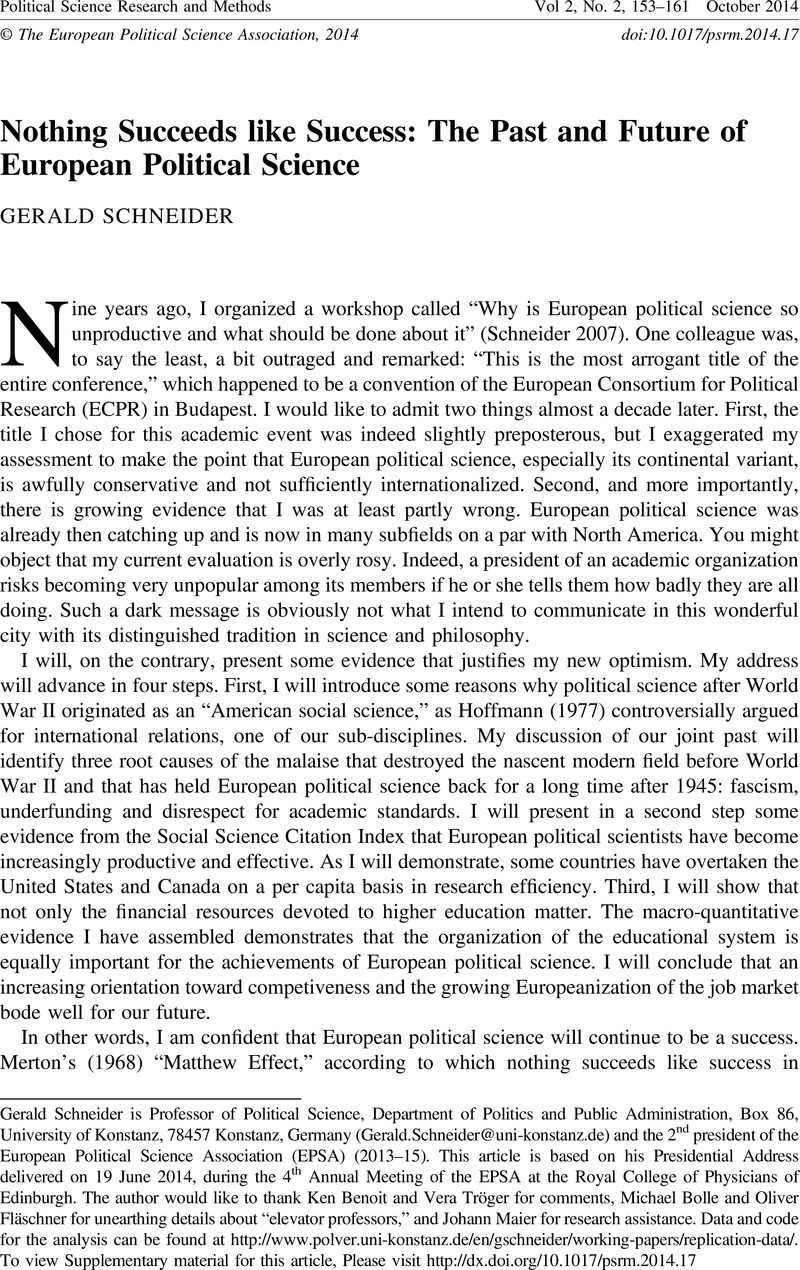Crossref Citations
This article has been cited by the following publications. This list is generated based on data provided by Crossref.
Ruhe, Constantin
Schneider, Gerald
and
Spilker, Gabriele
2014.
Handbuch Internationale Beziehungen.
p.
1.
Ruhe, Constantin
Schneider, Gerald
and
Spilker, Gabriele
2017.
Handbuch Internationale Beziehungen.
p.
641.
Molnár, Gábor Tamás
and
Ilonszki, Gabriella
2021.
Identity formation of the profession in a latecomer political science community.
European Political Science,
Vol. 20,
Issue. 1,
p.
139.
Ruhe, Constantin
Schneider, Gerald
and
Spilker, Gabriele
2022.
Handbuch Internationale Beziehungen.
p.
1.
Engeli, Isabelle
Kostova, Dobrinka
and
Tronconi, Filippo
2023.
Towards a European political science? Opportunities and pitfalls in the internationalisation of political science in Europe.
European Political Science,
Vol. 22,
Issue. 4,
p.
550.
Ruhe, Constantin
Schneider, Gerald
and
Spilker, Gabriele
2024.
Handbuch Internationale Beziehungen.
p.
757.
Invernizzi, Alessia
Klöckner, Ann-Cathrin
and
Schneider, Gerald
2024.
Mission partly accomplished: European Union Politics at 25.
European Union Politics,
Vol. 25,
Issue. 1,
p.
3.





